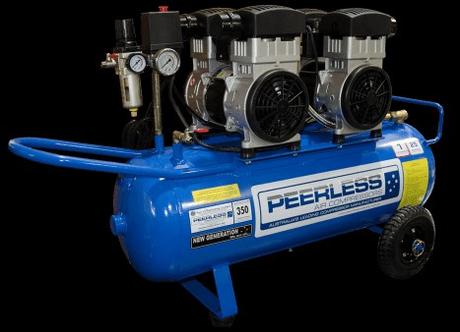Air compressors are vital tools used in various industries and applications, from automotive repair shops to manufacturing plants. When it comes to selecting the right air compressor for your specific needs, understanding the technical specifications is crucial. One of the most important metrics to consider is SCFM, which stands for Standard Cubic Feet per Minute. In this article, we will delve into the concept of SCFM, explaining what it is, why it matters, and how it influences your choice of an air compressor.

Understanding SCFM
SCFM, or Standard Cubic Feet per Minute, is a measurement that quantifies the volume of air an air compressor can deliver at a specified set of conditions. It is essential to standardize this measurement to ensure that different air compressors can be compared accurately, as the amount of air they can produce can vary significantly based on factors like temperature, pressure, and humidity.
To standardize the measurement of SCFM, the following conditions are commonly used:
- Temperature: 68 degrees Fahrenheit (20 degrees Celsius)
- Pressure: 14.7 pounds per square inch absolute (PSIA) or 0 pounds per square inch gauge (PSIG)
- Relative Humidity: 0%
In essence, SCFM represents the volume of air an air compressor can deliver at sea level conditions with dry, cool air. It’s important to note that real-world conditions often differ from these standardized conditions, so SCFM values are provided by manufacturers as a reference point rather than an exact measurement of what you will experience in practice.
Why SCFM Matters
SCFM is a critical specification to consider when choosing an air compressor for a specific application for several reasons:
- Matching Air Tools: Different pneumatic tools and equipment require specific air volumes to operate efficiently. Knowing the SCFM rating of your air compressor helps you ensure that it can supply enough air for your tools to function optimally.
- Preventing Overloading: Using an air compressor with an SCFM rating below the requirements of your tools can result in reduced tool performance and potential damage to both the tools and the compressor.
- Efficiency: Understanding the SCFM rating allows you to select an appropriately sized compressor for your needs, promoting energy efficiency and reducing operating costs.
- Air Tank Size: The SCFM rating is closely related to the size of the air tank on the compressor. A higher SCFM rating often corresponds to a larger tank, which can be beneficial for applications requiring a continuous supply of compressed air.
Choosing the Right Air Compressor Based on SCFM
To choose the right air compressor based on SCFM, follow these steps:
- Identify Your Air Tools: Determine which pneumatic tools or equipment you plan to use with the compressor and find their SCFM requirements in their user manuals or product specifications.
- Consider Future Needs: Anticipate any potential additions to your pneumatic tool collection and ensure that the compressor you choose can accommodate them.
- Compare SCFM Ratings: When shopping for an air compressor, review the SCFM rating provided by the manufacturer and ensure it meets or exceeds the total SCFM requirements of your tools.
- Account for Duty Cycle: Some tools may require intermittent use, while others may need continuous airflow. Factor in the duty cycle of your tools when selecting an air compressor.
Conclusion
SCFM, or Standard Cubic Feet per Minute, is a crucial metric when it comes to choosing the right air compressor for your specific needs. It helps you determine whether the compressor can supply the necessary volume of compressed air for your pneumatic tools and equipment to operate efficiently. By understanding SCFM and considering your tool requirements, you can make an informed decision when selecting an air compressor, ensuring productivity, efficiency, and longevity in your pneumatic applications.
